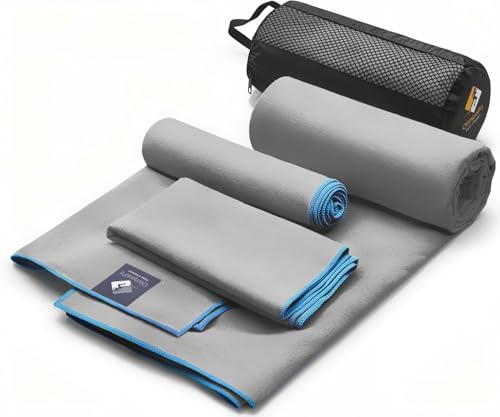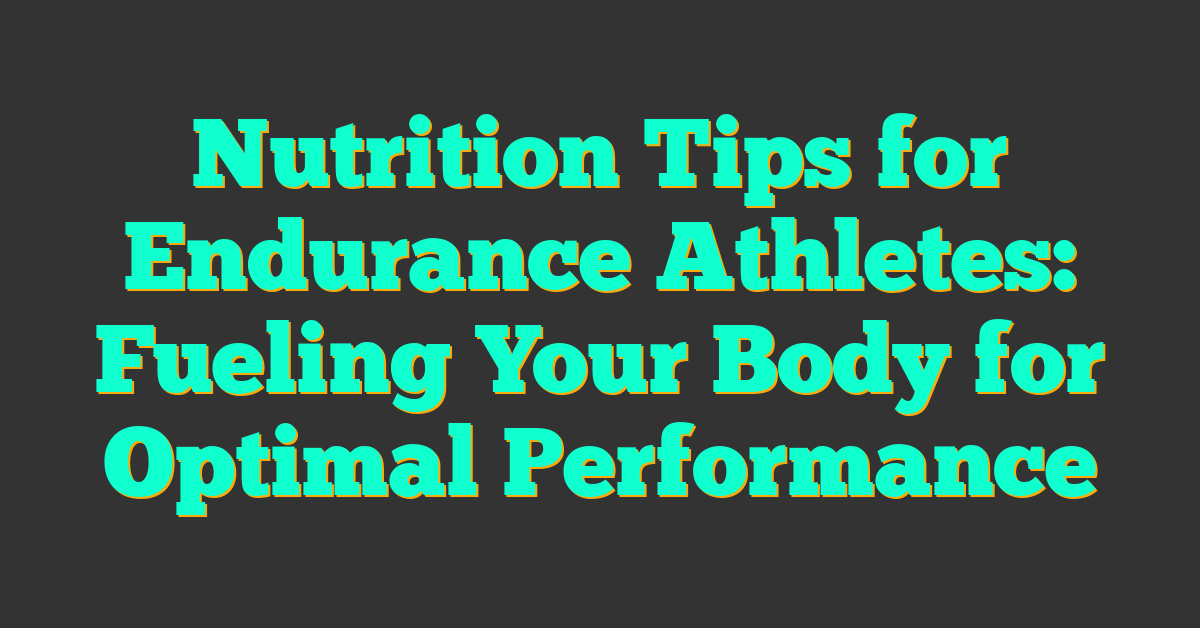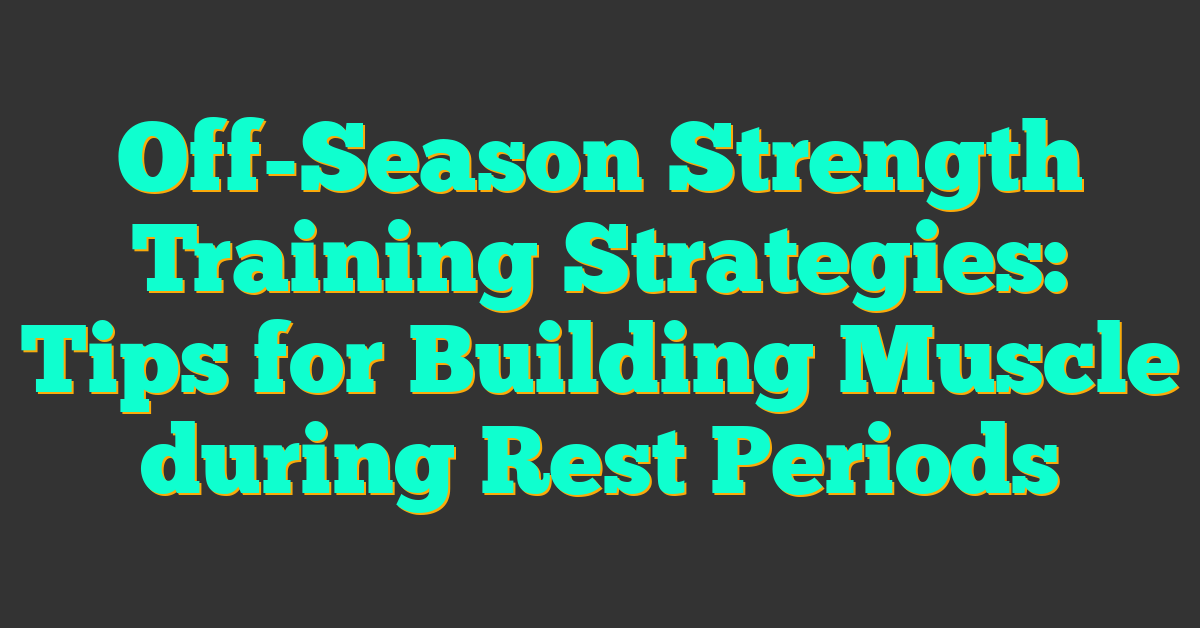I love when sport meets purpose. Triathlon gives me a chance to push my limits and lift a cause I care about at the same time. The energy at a charity race feels different. Every stroke pedal and step adds up to real impact.

In this guide I share my top picks for triathlon events that give back in big ways. I look for strong community vibes clear fundraising goals and courses that welcome all levels. Whether you want your first sprint or your next full distance I have options that fit your goals and your heart.
Triathlon Events For Charity: Top Picks
I curated triathlon charity events that blend credible impact with strong race quality. I matched training goals with fundraising outcomes across sprint, Olympic, and long-course formats.
How We Chose These Races
I chose these races using transparent, performance-driven criteria that align racing with measurable impact.
- Cause transparency: Verified 501(c)(3) status via IRS Exempt Organizations and strong watchdog ratings, Charity Navigator score ≥ 80, public Form 990 links
- Fundraising clarity: Published minimums or averages per entry, example ranges $500 to $2,500, clear donation flow and deadlines
- Course quality: Certified distances by USA Triathlon or World Triathlon, accurate splits, published cutoff times for swim, bike, run
- Inclusivity access: Multiple distances like sprint and Olympic, novice waves, para tri categories, relay options for mixed-ability teams
- Safety standards: USAT sanctioning, lifeguard or watercraft ratios near 1 per 40 swimmers, on-course medics near 1 per 250 athletes, incident reporting via race ops
- Community engagement: Local partnerships with schools and hospitals, 200 to 1,000 volunteers per event, year-round outreach programming
- Measurable impact: Post-race reports with dollars raised and grants awarded, Ironman Foundation grants $55M+ since 2003, multi-year commitments to host communities
Sources: IRS Exempt Organizations, Charity Navigator, USA Triathlon, World Triathlon, Ironman Foundation.
What Makes These Events Stand Out
These events stand out because they pair proven charitable impact with athlete-first logistics that support consistent training and confident racing.
Top picks with impact and logistics
| Event | Location | Distance options | Notable charity impact | Typical participant cap | Source |
|---|---|---|---|---|---|
| Nautica Malibu Triathlon | Malibu, CA | Sprint, Olympic relay | $1M+ raised annually for Children’s Hospital LA | 4,000 to 5,000 | Children’s Hospital Los Angeles, event site |
| Tri for a Cure | Portland, ME | Sprint, women only | $2M+ raised annually for Maine Cancer Foundation, $19M+ total since 2008 | ~1,300 | Maine Cancer Foundation |
| Chicago Triathlon Charity Program | Chicago, IL | SuperSprint, Sprint, Olympic | Multi-charity teams with structured fundraising tools | ~7,000 | Chicago Triathlon, Life Time |
| NYC Triathlon Charity Program | New York, NY | Sprint, Olympic | Dedicated charity waves and VIP entries | 4,000 to 5,000 | NYC Triathlon, Life Time |
| IRONMAN Foundation Entries | Global | 70.3, 140.6 | $55M+ in grants to 10,000+ organizations since 2003 | Varies | Ironman Foundation |
Coach’s takeaways for athletes
- Logistics alignment: Flat or rolling bike courses, predictable water temps 60 to 70°F, wave starts that reduce drafting risk
- Training synergy: Clear cutoff times that map to training targets, example 2h to 4h for sprint or Olympic finishes, supported brick sessions with partner clubs
- Fundraising support: Ready-made donation pages, corporate match guidance up to 100 percent, templated outreach emails for teams
- Community energy: Visible volunteer density at aid stations every 1 to 2 miles, local cheer zones that boost perceived exertion tolerance late in the run
- Progression pathways: On-ramps from super-sprint to Olympic in the same weekend, relay formats for skill-specific focus like swim technique or bike power
Sources: Event sites, USA Triathlon sanctioning documents, Ironman Foundation impact pages, Maine Cancer Foundation, Children’s Hospital Los Angeles.
Top Picks And Mini-Reviews
I focus on charity triathlon events that balance strong race operations with measurable impact. I match training goals with courses, fundraising support, and community energy.
Malibu Triathlon (Los Angeles, CA)
I rate Malibu as a high-impact charity triathlon with elite production and beach-course appeal.
| Metric | Data |
|---|---|
| Distances | Sprint 0.5 mi swim, 17 mi bike, 4 mi run, Classic 1.5 km swim, 40 km bike, 10 km run |
| Beneficiary | Children’s Hospital Los Angeles Pediatric Cancer Research Program |
| Funds Raised | Over 16 million cumulative |
| Typical Date | September |
| Field Size | Thousands |
Source: Children’s Hospital Los Angeles, Malibu Triathlon
- Cause clarity, pediatric oncology research with CHLA outcomes and annual reports.
- Course profile, Pacific Ocean swim current dependent, PCH bike rollers, flat run on asphalt.
- Fundraising structure, team tiers with matched gifts and corporate teams.
- Safety standards, ocean lifeguards and rolling lane control on PCH.
- Training fit, ideal as an A race after a late summer build or as a benchmark sprint.
London Triathlon Charity Places (London, UK)
I use London for scale, flexible distances, and deep charity partner choice.
| Metric | Data |
|---|---|
| Distances | Super Sprint 400 m 10 km 2.5 km, Sprint 750 m 20 km 5 km, Olympic 1500 m 40 km 10 km, Relays |
| Charity Access | Guaranteed entries via official charity partners |
| Participation | One of the largest UK triathlons |
| Typical Date | July |
| Venue | ExCeL London with closed-road bike |
Source: London Triathlon, LimeLight Sports Club
- Cause menu, national charities like Macmillan Cancer Support and British Heart Foundation.
- Course logistics, dock swim with wave starts, fast closed-road bike laps, flat run laps.
- Fundraising tools, charity portals and coached group fundraising efforts.
- Inclusivity access, novice waves and relay options for first-time athletes.
- Training fit, perfect midseason checkpoint before a longer August or September event.
Chicago Triathlon Charity Program (Chicago, IL)
I target Chicago for urban logistics, fresh-water swim, and strong charity infrastructure.
| Metric | Data |
|---|---|
| Distances | SuperSprint, Sprint, International 1500 m 40 km 10 km |
| Charity Partners | 50 plus partners across health, youth, community |
| Course Features | Lake Michigan swim, Lake Shore Drive bike, lakefront path run |
| Typical Date | August |
| Field Size | Large multi-day festival format |
Source: Chicago Triathlon, Life Time Events
- Cause diversity, partner list includes national and local nonprofits with tiered benefits.
- Course profile, harbor start with sighting buoys, protected LSD lanes, shaded run segments.
- Fundraising support, onboarding webinars and charity tents for race weekend logistics.
- Safety systems, lifeguard lines and on-course medical placed at high-traffic turns.
- Training fit, strong late-summer A race or tune-up before a long-course build.
Blenheim Palace Triathlon (Oxfordshire, UK)
I recommend Blenheim for iconic venue access, spectator energy, and coached charity waves.
| Metric | Data |
|---|---|
| Distances | Super Sprint 400 m 13.2 km 2.9 km, Sprint 750 m 19.8 km 5.4 km, Relays |
| Charity Access | Official charity places across UK causes |
| Heritage Status | UNESCO World Heritage Site venue |
| Typical Date | May or June |
| Field Size | Thousands over a weekend |
Source: Blenheim Palace Triathlon, LimeLight Sports Club
- Cause alignment, charities like Blood Cancer UK and Macmillan offer guided fundraising.
- Course profile, lake swim with pontoon exit, punchy bike climbs, rolling park run.
- Fundraising experience, charity villages and family-friendly viewing areas.
- Operations quality, wave control and venue wayfinding across palace grounds.
- Training fit, early season objective that anchors a progressive race calendar.
New York City Triathlon Charity Program (New York, NY)
I favor NYC for marquee status, high media attention, and robust charity partner tiers.
| Metric | Data |
|---|---|
| Distances | Olympic 1500 m 40 km 10 km, Relays |
| Charity Partners | 50 plus partners with guaranteed entries |
| Course Features | Hudson River point-to-point swim, Harlem Hill bike, Central Park run |
| Typical Date | July |
| Field Size | Thousands |
- Cause impact, partners include health, hunger relief, and community development orgs.
- Course profile, fast current-assisted swim conditions dependent, technical park bike, shaded run loops.
- Fundraising system, dedicated charity corrals and race-week briefings.
- Safety coverage, marine units and park medical with heat contingency plans.
- Training fit, peak-summer target that rewards heat acclimation and short-course speed.
Side-By-Side Highlights
« Off-Road Triathlon Events: Where to Find Them and How to Choose the Right Course
Triathlon Events for Kids: Top Options, Safe Distances, Gear & How to Choose »
I stack these triathlon charity events by practical entry details and on-course feel, so you can pick a top pick that matches your training and fundraising goals. I keep the focus on clarity, transparency, and athlete experience across each charity program.
Entry Options, Fundraising Minimums, And Perks
I compare common charity tiers and perks posted by official event or partner pages for the most current season.
| Event | Distances | Charity Entry Types | Fundraising Minimums | Core Perks |
|---|---|---|---|---|
| Malibu Triathlon | Classic, Sprint, Relay | Team CHLA, partner charities | $1,500–$3,000 | Guaranteed entry, race-week hospitality, branded kit, fundraising portal (Children’s Hospital Los Angeles, 2024) |
| Tri for a Cure (ME) | Sprint, Relay | Main entry includes fundraising | $550 minimum | Guaranteed entry, survivor recognition, community support tools (Maine Cancer Foundation, 2024) |
| Chicago Triathlon | SuperSprint, Sprint, Olympic, Relay | Official Charity Program | $750–$1,250 | Guaranteed entry, charity tent access, coaching resources vary by charity (Chicago Triathlon, 2024) |
| New York City Triathlon | Sprint, Olympic, Relay | Official Charity Program | $1,500–$3,000 | Guaranteed entry, VIP wave options, branded gear, fundraising platform (NYC Triathlon, Life Time, 2024) |
| London Triathlon | SuperSprint, Sprint, Olympic, Relay | Gold charity places, partner charities | £300–£600 | Guaranteed entry, charity kit, cheer stations, training guides (Challenge London, 2024) |
| Blenheim Palace Triathlon | SuperSprint, Sprint, Relay | Official charity partners | £300–£500 | Guaranteed entry, palace grounds access, kit, cheer points (Blenheim Palace Triathlon, 2024) |
- Pick guaranteed-entry charity places first, if you want a secure bib without lottery risk.
- Match fundraising tiers to your network size, if you prefer lower pressure for a first charity triathlon.
- Confirm perks directly with the charity, if coaching calls or race-day tents matter for your race plan.
- Align distances with your training timeline, if you target specific performance benchmarks.
Sources: Children’s Hospital Los Angeles Malibu Triathlon Team; Maine Cancer Foundation Tri for a Cure; Chicago Triathlon Charity Program; NYC Triathlon Charity Partners by Life Time; Challenge London (London Triathlon); Blenheim Palace Triathlon Charity Partners, all 2024 season pages.
Course Vibe And Spectator Support
I focus on race-day energy, crowd density, and course character that shape pacing and support.
- Feel beach-to-boulevard energy at Malibu, if you thrive on coastal spectacle and big-donor cheer zones near Zuma Beach.
- Expect tight-knit, mission-first support at Tri for a Cure, if you value emotional lift from survivor and family-led cheer lines across Portland’s waterfront.
- Find downtown buzz and easy-access spectating in Chicago, if you like frequent crowd pops along Lakeshore Drive and a calm lake swim.
- Hear wall-to-wall noise in NYC, if you race best with loud riverside crowds, TV crews, and packed finish chutes on the West Side.
- See capital-city scale at London, if you want stacked cheer stations, big-city logistics, and multi-distance waves that keep the course lively.
- Savor heritage ambiance at Blenheim Palace, if you prefer picturesque loops, family-friendly lawns, and consistent cowbell support near the palace grounds.
- Plan pacing around high-energy sectors, if you surge easily in noisy zones and risk early spikes.
- Place supporters at choke points and lap turns, if you want reliable splits, bottles, or cues without chaotic transitions.
- Coordinate charity cheer zones with your nutrition plan, if you aim to anchor gels or bottles to visible landmarks.
Choosing The Right Charity Tri For You
I match my charity triathlon to my goals first. I lock my race plan when my training and fundraising fit the same calendar.
Match Cause, Distance, And Timing
- Cause first, impact second. I pick a charity with transparent programs and annual reports, for example St. Jude or Macmillan Cancer Support, then I confirm how funds flow to projects through published reports.
- Distance first, timeline second. I pair the race format to my current base, then I map training blocks to race day.
- Calendar first, seasons second. I anchor the event in a favorable training season for my location, then I align long sessions with daylight and weather patterns.
- Story first, outreach second. I select a cause that connects to my network, then I plan 3 touchpoints for donations with clear milestones.
Training build timelines by triathlon distance
| Distance | Typical build weeks | Primary source |
|---|---|---|
| Sprint | 8–12 | USA Triathlon Coaching Education |
| Olympic | 12–16 | USA Triathlon Coaching Education |
| 70.3 | 20–24 | USA Triathlon Coaching Education |
| 140.6 | 24–30 | USA Triathlon Coaching Education |
Budget, Travel, And Team Support
- Budget first, line items second. I estimate entry, travel, lodging, bike transport, kit, and fundraising platform fees, then I confirm charity perks like waived entry or hotel blocks on the partner page.
- Travel first, logistics second. I choose races with simple transit and reliable bike services, then I book bike transport or a case 6–8 weeks out.
- Team first, resources second. I review charity benefits like coached plans, group rides, and race day tents, then I use the sessions as key workouts in my plan.
- Course first, equipment second. I match wetsuit thickness to water temps, tire choice to road surface, and gearing to elevation, then I run a gear check 14 days out using the course guide.
Fundraising And Training Tips That Work
I connect race prep with donor engagement so every workout and ask supports the cause. I keep plans simple, measurable, and anchored to the event’s date.
Build A Donation Story And Timeline
I build a donation story that links the charity’s impact to my training outcomes. I state a clear fundraising goal, a race date, and a reason that ties my effort to the mission.
- Define: Set a specific goal, timeline, and impact metric, for example $2,500 in 12 weeks funding 25 pediatric chemo kits.
- Quantify: Break the goal into units, for example $50 equals 1 counseling hour, to make each ask tangible.
- Segment: Group contacts by relationship strength, for example family, close friends, colleagues, club members, and tailor messages.
- Schedule: Plan 3 asks and 3 updates across the build, peak, and taper phases for consistent touchpoints.
- Match: Secure 1 matching donor or employer match to double early momentum if a sponsor aligns.
- Thank: Send same‑day thanks by channel, for example text, email, card, and tag donors on social if they consent.
- Report: Share a post‑race impact update with totals and photos to close the loop and prime next‑year asks.
Fundraising timeline anchored to triathlon charity events:
| Week Out | Focus | Action | Target |
|---|---|---|---|
| 12 | Launch | Announce goal, story, donation link | 20 personal messages |
| 10 | Early push | Host a short live Q&A, for example IG Live, club night | 1 event, 1 matching donor |
| 8 | Proof | Share training milestone with charity stat | 2 posts, 10 follow‑ups |
| 6 | Mid push | Email segmented updates with specific amounts, for example $25, $75, $150 | 3 segments, 1 reminder |
| 4 | Countdown | Share course preview and logistics from top picks, for example Malibu, Chicago, NYC | 2 posts, 5 DMs |
| 2 | Final ask | Tie taper focus to final gap ask | Close 20% gap |
| Race week | Gratitude | Publish donor list, bib photo, tracking link | 1 post, 1 email |
| +1 week | Impact | Share totals and charity receipt link | 1 report, 3 thank‑yous |
I align language with evidence that specific, time‑bound goals improve giving and follow‑through [Giving USA, 2024, https://givingusa.org]. I keep donation processing on a reputable platform linked by the charity’s program page for trust [Charity Navigator, 2025, https://www.charitynavigator.org].
Train Smart Around A Cause-Driven Goal
I train smart by matching distance, fitness, and the charity race date, then building load with progressive structure.
- Anchor: Set the event date and distance, for example sprint, Olympic, 70.3, then back‑plan phases.
- Periodize: Use base, build, peak, and taper blocks with progressive overload and recovery if soreness persists beyond 48 hours [ACSM Guidelines, 2021, https://www.acsm.org].
- Brick: Pair bike‑run sessions weekly to mimic charity triathlon transitions if life schedule conflicts reduce long days.
- Pace: Set zones from a 20‑min bike FTP test and a 30‑min run time trial for precise workouts [USA Triathlon, Training, https://www.teamusa.org/USA-Triathlon/Training].
- Practice: Rehearse open‑water skills, for example sighting, starts, drafting, at least 2 sessions in race month if surf or current features in course notes.
- Fuel: Train fueling at 30–60 g carbs per hour for Olympic and 60–90 g per hour for 70.3 with sodium 300–600 mg per hour if heat index exceeds 85°F [IOC Consensus, 2023, https://doi.org/10.1136/bjsports-2022-106204].
- Taper: Reduce volume 30–50% across 7–10 days while keeping brief intensity to protect form if fatigue rises near race week [Mujika, Tapering in Endurance Sports, 2010, https://doi.org/10.1152/japplphysiol.00937.2009].
| Distance | Weekly Hours | Key Longs | Key Bricks | Frequency |
|---|---|---|---|---|
| Sprint | 4–6 | Bike 60–90 min, Run 40–50 min, Swim 1,500–2,000 yd | 30 min bike + 10–20 min run | Swim 2, Bike 2, Run 2, Strength 1 |
| Olympic | 6–9 | Bike 2–2.5 hr, Run 60–75 min, Swim 2,500–3,000 yd | 60 min bike + 20–30 min run | Swim 2–3, Bike 2–3, Run 3, Strength 1 |
| 70.3 | 9–12 | Bike 3–4 hr, Run 90–120 min, Swim 3,000–3,500 yd | 90 min bike + 30–40 min run | Swim 3, Bike 3, Run 3, Strength 1 |
- Connect: Name the cause in session goals, for example “tempo 20 min for cancer research,” to lock intent.
- Scout: Train on terrain that matches top picks, for example ocean chop for Malibu, river current for NYC, freshwater chop for Chicago.
- Rehearse: Test race kit, charity singlet, and pin placement in a brick if skin irritation appears.
- Protect: Cap easy days at zone 1–2 and keep strides short if niggles emerge.
- Pace race: Start conservative for 10–15 minutes in each leg, then lift to target power or pace if HR stays within planned zone.
Conclusion
I race for more than a finish line. I race to move a needle that matters. If you feel that spark then it’s time to act. Pick a date. Choose a cause that hits home. Set a clear goal that you can see and measure. Tell people why it matters and invite them to join you.
I’ll keep cheering for you from the first workout to the final mile. Train with purpose. Share your progress often. Celebrate every pledge and every small win. When race day arrives you won’t just cross a line. You’ll carry real change with you. Lace up. Dive in. Let your effort turn into impact.










